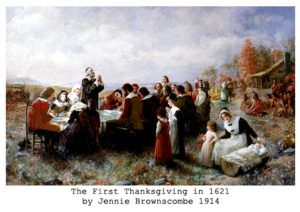Yes I am flogging this dead horse again except that its an all new flog, we are flogging a different part of the horse and the horse might just not be dead yet!
Well it had to happen and last week it did, the first difference of opinion between Labour and the Greens happened since their cosy little MOU in May. And what was the disagreement over? Not surprisingly it was housing!
But we are not calling it a housing crisis anymore, that term is too controversial, too running down the road with your head on fire, so instead we are now calling it the Housing Hernia.
I had a hernia once. I got it after five hours shaking my behind on a sweaty dance floor and then walking, dripping in sweat, out into the chill of a Singaporean pre-dawn. It was not a smart move. First I got a hacking cough, then it got worse, finally it got nasty. The cough became painful, very painful every time I sneezed, which was a lot. I had contracted tropical pneumonia.
Overnight I was transformed into a low budget Michael Jackson impersonator by the fact that every time I sneezed I grabbed my crotch and screamed. This entertained my friends and co-workers no end at first but since I couldn’t do the dance moves or sing Billie Jean it soon became tiresome.
Sensing a serious problem I made haste to my local Singaporean doctor, a hardworking gentleman who served the massive HDB (Housing Development Board) block next to where I lived. He was quick, he was efficient and after hearing my plight and testing for himself by pressing the affected area (eliciting a strangled scream from me) he pronounced me the proud father of a hernia.
“A hernia, you mean like what rugby players get?†I asked (forgetting that Singaporeans don’t play rugby and my own experiences of who might get a hernia was severely limited). “Yes†he said in that voice doctors have for patients who ask stupid questions. “So what do I do?†I asked. The doctor looked at me and said “you can have surgery to treat it or leave it as it is and risk a rupture†in the same way a waiter might give the options for desert (lemon tart or chocolate cake? The correct answer is cake!). Needless to say I chose surgery!
So off I went to see the specialist, who has two plastic gold lions outside his office (a common sight outside offices in Singapore) which denoted the wealth and taste of the occupant inside. Thankfully he was a skilled doctor and thanks to the magic of health insurance (the only expats in Singapore without it are the stupid ones) I was booked in and ready to have the little bugger removed.
I won’t bore you with the gory details but suffice it to say the operating room looked like an extremely clean, white tiled, mechanics bay (complete with a rack of shiny, stainless steel tools which looked like they could pull the wheel nuts off a F1 racer in 2.6 seconds) AND that the anesthetist was late because, and I swear I am not making this up, he was playing golf!
So I lay on the wheeled stretcher, listening to the heart monitor, attached to my thumb, beeping and made a game of trying to slow my heart rate down, which correspondingly made the beeping decrease but every time I looked at the “tool rack†on the wall the beeping suddenly shot back up.
Finally all and sundry were present, I was given a shot in the arm, and asked to count to 10. I made it to five.
When I woke up I was on a stretcher in the hall and there was a pain where the hernia had been residing along with a big bandage. I hobbled out of the hospital, helped by my wife, into a taxi and home to recover.
It took a week of walking round painfully but after that the pain was gone, I had a scar to show where the doctor had cut me open and put in a plastic mesh over the hernia (which prevented it from popping out/rupturing) and its never bothered me since despite continuing to do martial arts and all manner of things which might have “ruptured†me, had I not done something about it.
Now the point of this story is to illustrate that “hernia†is a much better term to describe the housing situation in New Zealand (with its slow building (pun intended) series of issues which lead to said hernia); that the process of dealing with the wee beastie at no point required me to behave as if my head was on fire and that if left unchecked will most likely lead to a “ruptureâ€.
In New Zealand the housing hernia is at what we might call the “Michael Jackson†stage of the process with sudden painful outbursts before all, temporarily, returns to “normal†and the growing realization that something is seriously wrong.
In deciding what to do with it appears that the Greens, or perhaps just Metiria Turei in an unscripted outburst, have opted for surgery in the form of cutting house prices to around $350, 000, while Labour, justifiably upset at being caught on the hoof by the statement but still in denial about the issue, have decided to continue with pretending that they might have a chance at appearing on Stars in Their Eyes (fat chance once you see this guy).
But as Jo Moir points out in the media, the split between the two parties clearly reflects each’s voter/generational differences with the Greens supported more by younger renters and Labour by older home owners. Of course such splits are not total but it does seem to reflect the basic demographics of the situation.
And she is not the only one to pick up on this, as media commentator Johnny Moore, found out recently when he wrote a piece attacking (at least partially in jest) the NZ Baby Boomers for making their own lives comfortable at the expense of future generations.
The response was predictable and somewhat correct in that he was eviscerated for creating a generational generalization which while overly broad in its sweep by blaming the Me Generation, also missed the fact that it’s not just boomers who are buying up houses in Godzone or that the problem is also due to political inaction by successive governments. None the less he got the parameters of the problem right.
But the best articulation of the hernia goes to Pencilsword with his masterful cartoon which is the most succinct articulation of the divide growing in NZ, I highly recommend his work.
And gap is what the issue is and if the numbers in Pencilsword’s cartoon are even remotely correct then we have the making of a generational split in NZ that may never be bridged unless something very drastic is done, like reducing house prices to an average of $350,000.
Because, as he so cleverly puts it, if you don’t own a home you have to rent and rents go up at the same market rates as house prices go up (so their owners can service their massive mortgages) yet wages ARE NOT going up or keeping pace with the rapid rise of house prices so if you rent your ability to pay rent is reduced until you either have to move to somewhere cheaper (say a garage, a car or Australia) or you get a nice large pay rise like MPs get (because we all get those don’t we?).
And this is why, despite the not adhering to the terms of the MOU by just letting fly to the media without warning Labour in advance, the Greens (or just Metiria Turei) have thrown the problem into sharp light by proposing a solution which while painful is probably necessary to prevent the likely rupture if NZ keeps on ignoring the problem and then shrieking and reeling in pain every time the housing market painfully shoots up another $3000.
For the homeowners in NZ (some of whom are Me Generation boomers) they just want this issue to go away, and the media for a long while has been compliant (possibly because they are also of said generation) by not bringing it up.
But for the renters (some of whom are Generation X (like myself) and Y’s) the problem is not going to go away, it’s getting more and more painful as rent gobbles more and more of ones pay packet at the expense of everything else and nary without a decent pay rise on the horizon (unless you move to Australia).
I note that in Christchurch where I live, rents have recently stabilized by new housing coming on stream but rents are still high and those that I know who own more than one home have reported grumbling by tenants at the high rents to the point of even asking for a reduction.
So the schizophrenic standoff continues with John Key and National, and now Andrew Little and Labour, in denial while bedazzling their white socks and glove while the upsetting, and painful solution is being discussed by the Greens (who knows what Winston thinks of this matter?).
And again the hernia analogy works here, yes getting the problem fixed before the rupture occurs, by correcting market prices, is going to hurt for some people, but there are ways to bring things down without setting ones hair on fire and the result if left is very very obvious because ALL bubbles burst/overheated markets correct in time and when house prices are jumping at $3000 a week I think we can all agree that the market is booming but it’s not going to last.
The beggar at this banquet of home ownership is anyone who can’t afford the massive sums, let alone the deposit, for a house in one of New Zealand’s major cities or towns and who is going to get continually squeezed by rising rents until something has to give.
And the rupture, if/when, it comes will be broadly along generational lines, as declining levels of home ownership do mostly align with the ages of people, resulting in a generational explosion of non-home ownership, frustration and rage at being denied a shot at the Kiwi Dream (the Quarter Acre Pavalova Paradise) and political behaviors which while not Trumpian in their levels could lead to something/someone in office for which they will be later blamed for (ironically) while the true guilty parties will have either passed on or be living comfortably retired in their mortgage free homes.
Of course the simple argument is that Labour (and the Greens) are just representing their respective electorates and that Andrew Little can’t afford to take any action which might leave the Labour faithful with a house worth less than their mortgage but if that’s the case then Andrew Little better get used to Labours current polling because they will have to squabble with the ever popular John Key and National for the declining share of voters who have their own home while the Greens and NZ First continue to gain as they speak for the increasing numbers of those who can’t make the mortgage nut.
So if this little split between Labour and the Greens is real then its more than just the Honeymoon being over, kiss goodbye the champagne and lingerie for good as this difference is unlikely to go away with just some whispered sweet nothings and a box of chocolates. To heal this divide is going to require one party or the other to give some serious ground and there is no indication that either side will be doing that. So as Moir notes someone will be “sleeping on the couch for the foreseeable futureâ€.
But if this is politics, policy or pragmatism it’s rapidly becoming irrelevant and the housing hernia will continue to cause pain in New Zealand until the market “ruptures†or pigs need clearance to land at airports.
Finally I add this little bit of piece of gossip as it came to me from two unrelated sources and while probably in the realm of speculative fiction is not beyond the pale of possibility.
Said rumor being that the reason why National is thinking about an early election next year (July 2017 instead of November 2017) is because they know the market is going to crash soon and want to be out of power so that Labour gets the blame much like Obama got blamed for GFC which was happily brewed up while GW was on watch (but who is going to let facts get in the way of a good ol session of political point scoring).
I am not quite sold on this, yet, as it requires National to have foreknowledge of the coming crash and be willing to give up all the perks of being in government for the minor political points accrued from Nyah Nyahing Labor while it struggles with the housing hernia blowing an O-ring and writhing around in pain like its head is on fire.
But what could change my mind about this is if our ever smiling PM was to be considering dropping out of politics for whatever reason as then Nationals chances of making a fourth term are slim to zero as none of the haggard, bloated visages in cabinet  is going to have the same mojo as Key when it comes to leading the party, winning over the populace or avoiding the deluge of knives aimed at their back.
In such a situation then I would fully expect National to cut their losses by running through as much of their political program as possible between now and polling day before taking the hit and leaving Labour with the inevitable mess and them free to play the blame game.
John Key made his money as a market speculator and the housing market has all the hallmarks of a speculators market (rising bubble prices, external third parties, owning more than one house etc) so if anyone in cabinet has an inkling of what’s coming it will be him and its clear he wants to leave a legacy (see the flag debacle) so all the more better to get out before the proverbial explodes all over the fan and leaves whoever is in government with a mess than won’t wash out. He can then at least claim it was Andrew Little’s fault and criticize government inaction from the opposition benches.
There is a reason why NZ got state housing in the 30s and it was due to similar circumstances like we are getting today (low home ownership and predatory landlords) so there is a historical precedent for dealing with this. If not State Houses then something for modern times which has the same effect of getting people into homes (I wont even get into why home ownership is important for a modern state/democracy today but there is a wealth of work on the death of the middle class and the goal of neo-liberal markets to sweep away any obstacles to all wealth being consolidated in the hands of a greedy few for anyone with time to read up on it).
So to end, back to my hernia story. It was clear that at some point I would have to make a decision and take action, leaving it off in the hope of it going away would only prolong the agony and the odds of it magically remaining in equilibrium and not rupturing were very low.
So the choice is really between action now under painful but controlled circumstances or emergency surgery later BUT with much more pain and a nasty generational scar that won’t heal over. The latest Labour/Greens spat may heal over until the election but the Michael Jackson impersonations won’t soon go away and Generation Rent might sound like a good musical story but I wouldn’t want to be in it.

 Buchanan family Thanksgiving table in The Barn, Holliston, MA.. Photo courtesy Kathy LaCroix Buchanan
Buchanan family Thanksgiving table in The Barn, Holliston, MA.. Photo courtesy Kathy LaCroix Buchanan
